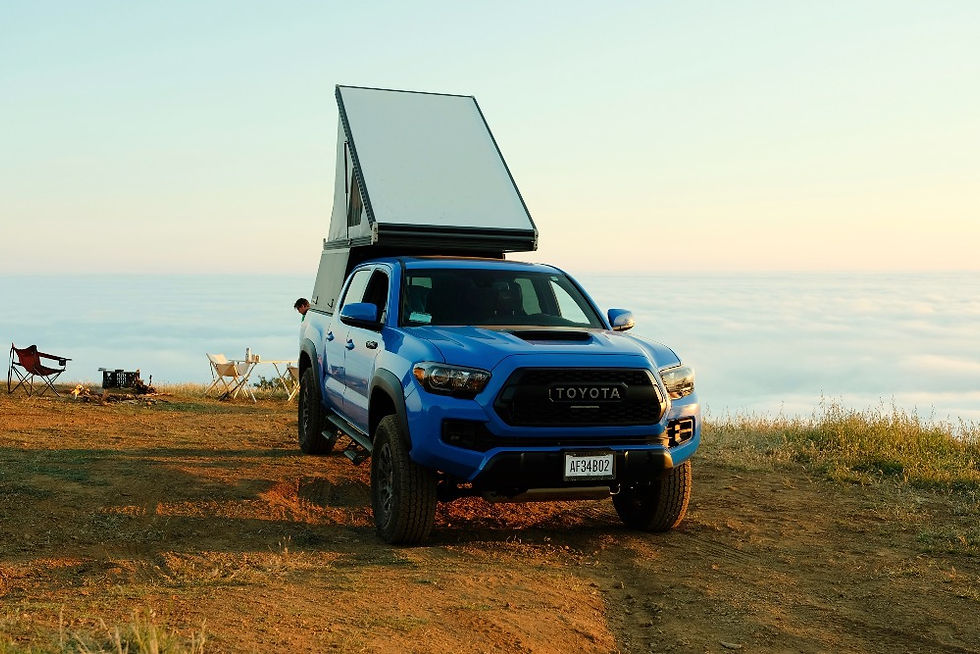What is the mission?
We often receive the following question from our community: what is your favorite overland rental vehicle in your fleet? Our 4x4 campers have many common elements, and they all pass a very high bar for off-road performance requirements, but they are all built out differently. Some have roof top tents and others are setup as pop-up camper.
Our favorite overland vehicle and overlanding equipment selection depends on what we want to do.
While we were building out our overland rental vehicles, we developed a framework that can help others select their own overland vehicle and gear setup that meets a personalized set of objectives.
We started our equipment selection by carefully considering the type of trips we would want to go on. We challenged ourselves to try to answer this question: “What is the mission for our trip?”.
The answer to this question, coupled with a few principles, will guide our selection of the right equipment.
We unpacked the question further, to guide our thinking process. Purpose: Overlanding is predominantly about exploration and adventure. Conquering obstacles or making maps of uncharted territory fall under different categories or rock crawling and expeditions. There is a subtle difference between exploration and adventure that lies in the mindset. Adventure is all about thrill seeking, so pack your foldable canoe and a mountain bike. Exploration is all about gaining new knowledge from venturing to a new place few have been to, so pack your foldable canoe and a mountain bike :)
Duration: a long-weekend camping at a nearest campground with a fire pit and a table is very different from a 7-day trip to remote area, which is also different from a weeks-long journey to Baja, which in-turn is not the same as heading north to Alaska...
Longest leg between re-supply: this will determine the amount of fuel, food, and water to carry. As a consequence, it will also restrict the space and weight for other adventure gear - like kayaks, bikes, or paddle boards. Additionally, this will place a constraint on the type of recovery gear you will need.
Self-reliance: this is a difficult requirement to meet and it will “cost” you in money, space, and weight, especially when coupled with a long time between re-supply points. In reality, the remote areas of California and neighboring states are far from desolate.
Camping: remote and established campgrounds. We are OK with Wallmart parking lots being monopolized by #VanLife.
Terrain: Overland vehicles and gear should handle technically challenging terrain like Steele Pass in Death Valley, but that’s about as far as we would want to push it - we chose to leave rock crawling to others.

Climate: It’s easy to enjoy the warm-summer Mediterranean climate of California or hot desert climate of Baja with minimal gear. But how will the setup handle the subarctic climate of Eastern Oregon (if that’s your mission)?
And here are the main principles that we used for our overlanding vehicle setup: 1. Build for the last mile.
2. Nobody gets extra points for being uncomfortable.
3. Weight is your main enemy.
Purpose: Relaxing getaway and reconnect with nature for 2-3 people
Duration: up to 7 days
Leg between re-supply: 2-3 days
Self-reliance: Some
Camping: remote and established campgrounds
Terrain: technically difficult
Climate: 4 seasons in warm-summer Mediterranean climate
Purpose: Exploration and adventure for 2-3 people
Duration: up to 30 days
Leg between re-supply: 4-5 days
Self-reliance: Some
Camping: remote and established campgrounds
Terrain: technically challenging
Climate: 4 seasons in warm-summer Mediterranean climate



Yorumlar